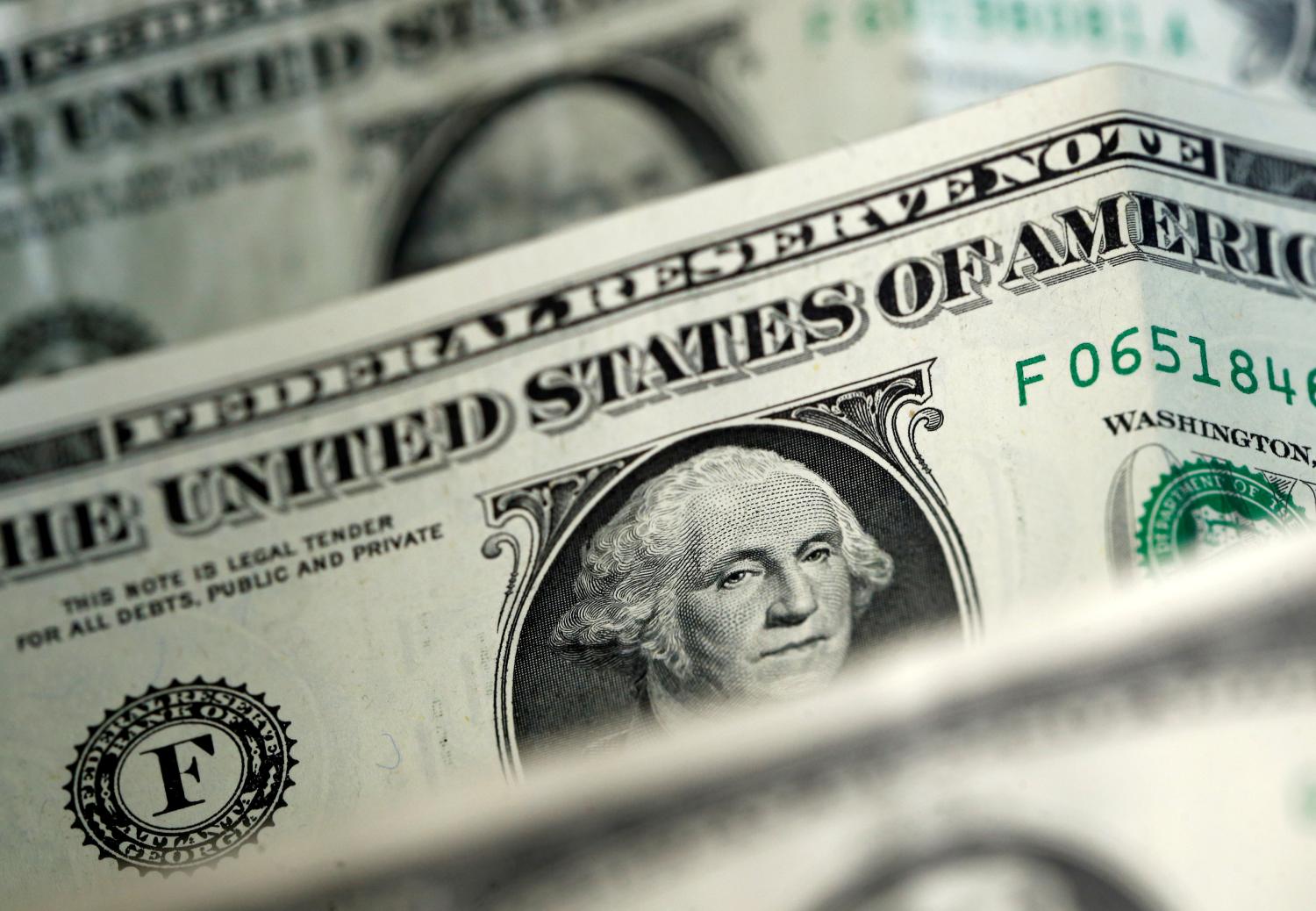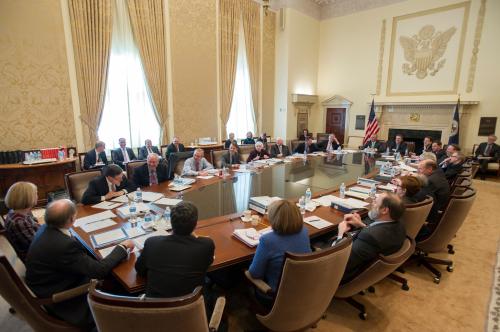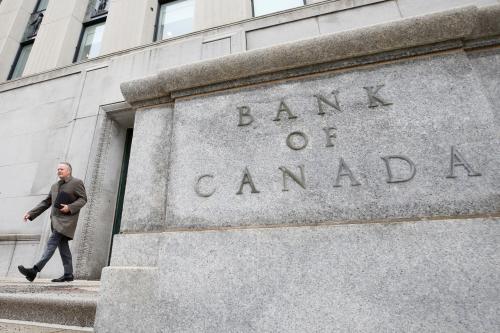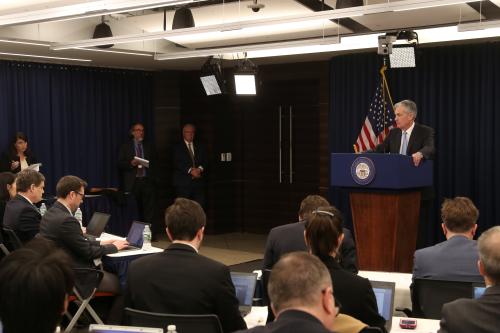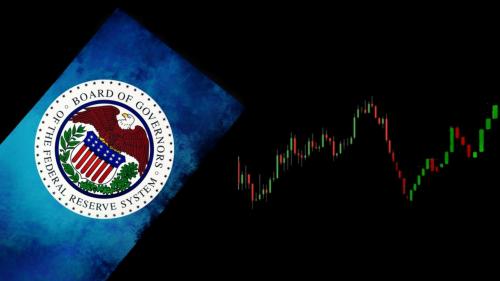The following is drawn from remarks Lawrence H. Summers, the Harvard University economist and former Secretary of the Treasury, made at the Hutchins Center conference.
I have been asked to make the case that a new monetary policy framework that moves away from the current 2 percent inflation target would permit the economy to achieve higher levels of output and employment over time. Since I am fairly confident that improvement on these dimensions is possible but much less sure just what framework is appropriate, I am pleased to accept this assignment. I will argue that any appropriate framework will have the property that in normal times the federal funds rate will exceed 4 percent, an outcome to which markets and the Fed currently assign low probability.
First, I will review the history behind the choice of a 2 percent inflation target and argue that the logic applied when it was chosen mandates a higher target today. Second, I will explain why I find the broad “new Keynesian” framework in which most discussion of monetary policy is carried on to be unsatisfactory. Third, I will argue that the current 2 percent inflation target framework makes it very likely that the next recession will come sooner and be more protracted than is necessary as well as putting excessive pressure on fiscal policy. Finally, I shall consider possible alternative monetary policy approaches.
The choice of the 2 percent inflation target
On the Federal Reserve website the question “Why does the Federal Reserve aim for 2 percent inflation over time?” is posed and answered. The key sentences of the answer are “Over time a higher inflation rate would reduce the public’s ability to make accurate economic and financial decisions. On the other hand, a lower inflation rate would be associated with an elevated probability of falling into deflation…a phenomenon associated with very weak economic conditions. Having at least a small level of inflation makes it less likely that the economy will experience harmful deflation if economic conditions weaken.” The particular choice of 2 percent as a target dates from discussions of operationalizing the idea of price stability that took place in the FOMC in the mid-1990s.
The Fed’s explanation of its choice of a 2 percent target makes clear that it involves trading off what are seen as the costs of inflation and the benefits of avoiding deflation. It is natural to ask whether the nature of this tradeoff has changed over the last generation since the Fed chose to define price stability as 2 percent annual growth in the Personal Consumption Expenditures (PCE) deflator.
I do not see much that has changed that bears on the cost of higher inflation in making it harder for economic agents to plan. On the other hand there are compelling reasons to believe that the risks of deflation have increased. First, the world has seen a substantial amount of deflation or very low inflation over the last 20 years. In Japan and significant parts of Europe, deflation has taken place over several year periods. And there were moments during the financial crisis when deflation appeared a real risk for the United States. Second, deflation scenarios occur when the economy falls into the liquidity trap where short term safe nominal rates cannot be reduced any further even though there is economic slack and inflation rates are declining. On any reasonable calculation this is a much greater risk than it could have appeared in the mid-1990s. Just consider the decline in either the Fed’s judgement of neutral real rates or market judgements of future real rates. The median FOMC member today believes that neutral real rates are 75 basis points. This is roughly in line with long term real rates inferred from the TIPS market.
While the Fed didn’t forecast neutral rates in the mid-1990s and indexed bonds had not yet been introduced, comparisons of nominal yields and prevailing inflation suggests that expected real rates were 2 percent or more.
If deflation risks look considerably greater than they did in the 1990s and the costs of inflation look about the same, it follows that whatever inflation target was appropriate then is too low today. I will take up the questions of how consequential it is to have too low an inflation target and of what kind of framework is appropriate in the context of today’ economy. But first I want to offer a major caveat regarding the theoretical frameworks used in most discussions of monetary policy.
The natural rate hypothesis straitjacket
The traditional view of macroeconomists and macroeconomic policymakers was that the most important objective of macroeconomic policy including, in particular, monetary policy was to maximize an economy’s level of output and employment over time. (See Blanchard and Summers (2017) for an elaboration of many of the ideas in this section) The idea was that with better policy, catastrophes like the Depression could be avoided and recessions could be minimized without there being important losses of output or employment in boom times. As reflected in Jim Tobin’s famous quip that “it takes a heap of Harberger triangles to fill an Okun Gap”, maintaining adequate and stable demand was seen as a central requirement of sound economic policy.
All of this dramatically changed with the Friedman and Phelps proclamation of the natural rate hypothesis and with the stagflation of the 1970s. Economists concluded that sustained higher rates of inflation would not in general be associated with sustained higher levels of output and employment—this was the essential content of the natural rate hypothesis. In Friedman’s original formulation the Phillips curve represented not a tradeoff between unemployment and inflation but between unemployment and the acceleration of inflation. Other formulations associated with the New Classical macroeconomics asserted that unemployment could be reduced only when inflation exceeded expectations.
The policy conclusion was similar for all formulations of the natural rate hypothesis. Since monetary policy could not influence the average level of output and employment over time, it should properly be dedicated to achieving price stability however defined and minimizing the volatility of output. It quickly followed from work on dynamic consistency that this could best be done by finding commitment devices that reduced inflationary expectations along with inflation. Central bank independence came to be seen as such a device, as did the inflation targeting frameworks now in widespread use. Crucially central banks and even scholars who called themselves new Keynesians abandoned the goal of using monetary policy to raise the level of output over time. The macroeconometric models large and small on which central banks relied almost without exception assumed the independence of long run average output levels from monetary policies. Given this assumption the case for a low inflation target is indeed secure, though the issue of just what that target should be remains.
However three strands of recent macroeconomic research call into question the premise that monetary policy cannot over long intervals affect output and employment. First, an increasing body of evidence suggests the importance of hysteresis effects whereby recessions reduce subsequent potential output (Blanchard 2018, Yagan 2017, Blanchard Cerutti and Summers 2015, Ball 2014). If such effects are present more aggressive monetary policies that prevent or rapidly mitigate recessions will raise levels of output over time. Hysteresis effects may arise from many different sources including reduced levels of investment in physical capital and R&D, lost human capital as those who fall out of work become habituated to being out of work, reductions in the social stigma associated with nonwork, or changes in wage setting practices as firms’ attached workforces shrink.
Second, recent work by Nakamura and Steinsson building on Milton Friedman’s “plucking” model of business fluctuations suggests that it may be better to think of business fluctuations not as symmetric movements around an average level of output whose amplitude is desirable to minimize, but more like periods of illness when output and employment fall short of desired levels (Dupraz, Nakamura and Steinsson 2017). The evidence for this proposition takes the form of demonstrating that the correlation between the size of downturns and subsequent upturns is much greater than the correlation between upturns and subsequent downturns. If one thought of as recessions as like periodic fevers this is exactly what one would expect. With plucking effects, as with hysteresis effects, the case for minimizing recessions is magnified because there is no reason to expect that output lost in recessions is subsequently made up.
Third, ideas related to secular stagnation suggest that economies may be vulnerable to prolonged output shortfalls if monetary policy is unable because of constraints on the lowering of nominal interest rates to achieve real interest rates necessary for full employment levels of demand. Closely related is the argument of Akerlof, Dickens and Perry (1996) that because of a zero lower bound on nominal wage changes the Phillips curve may not be vertical at low rates of inflation. These arguments make a case that a higher rate of inflation, by relaxing constraints that might otherwise bind, allows more output.
All of this matters for consideration of optimal monetary policy. Almost all discussions of monetary policy assume that it can control the level of inflation over time, but that it can affect only the volatility and not the level of output over time. If this is not the case, then monetary policy choices are more consequential than is commonly supposed and issues relating to the average level of output should likely be central in the determination of monetary policy.
Almost all discussions of monetary policy assume that it can control the level of inflation over time, but that it can affect only the volatility and not the level of output over time.
Consequences of the current monetary policy framework
Within the current policy framework we are likely to have, by historical standards, very low rates for a very large fraction of the time going forward even in good economic times. Federal Reserve policymakers’ view, expressed in their Survey of Economic Projections, is that the neutral real rate is in the neighborhood of 1 percent (Figure 1). We’re at more risk, at least currently, of falling short of the Fed’s 2 percent inflation target than we are of exceeding it. And it’s a good rule with official projections – think about the weather bureau—that when they keep being revised in one direction, they continue to be revised in that direction. In other words, there is positive serial correlation in the revisions. So, it would be my judgment that further reductions in predictions of the neutral real rate are more likely than further increases.
The market essentially shares this view. The long-run LIBOR forecast is 2.3 percent, which is less than the Fed’s 2.8 percent. There a reason for that discrepancy: the market is projecting the expected value; the Fed is projecting the mode. On the other hand, the market forecast builds in a term premium whereas the Fed’s forecast doesn’t. It is a reasonable judgment, then, that if we continue to operate in our current framework, in good times nominal interest rates will typically be in the 2 to 3 percent range. Obviously, that’s a projection made with substantial error, but I cannot see good reasons for thinking that the Fed or the market estimates are massive underestimates.
Recessions will come. What is the likelihood? Recoveries, unlike people, do not die of old age. Once one is significantly into a recovery, the probability of recession is essentially independent of the length of the recovery. That probability, depending upon just how far back one looks, is something in the neighborhood of 15 to 20 percent on an annual basis. That’s a historical reading looking back through 50-odd years of U.S business cycle history. Is it the right view going forward? You can make a case that it’s an understatement of the risks going forward. That case would emphasize that normal growth is now 2 percent rather than 3.5 percent, and so you have to slip less far to fall into recession. It would emphasize a higher degree of geopolitical risk now than in the past. It would emphasize that we have a more financialized, more levered economy with higher ratios of wealth to income that is, therefore, more at risk of financial disturbance. A case for more optimism—that the past probability of recession is an overestimate—would emphasize lower inflation, and less risk of inflation getting out of control forcing the Fed to hit the brakes hard. It would emphasize smaller inventory cycles in a less tangible and physical economy. I’m not convinced that one of those sets of considerations is far more important than the other so I think 15 percent annually is a reasonable estimate of the probability of a downturn.
In the next recession, monetary policy of the standard form will lack room to do what it usually does. On average, as Table 1 illustrates, short-term nominal interest rates are reduced by 5 percentage points to combat recessions. If you look at real rates you similarly conclude that about a 5 percent reduction in rates is necessary. So the overwhelming likelihood is that when recession comes monetary policy will not have sufficient room to cut rates as much as it would like to within the current framework. If one believes that neutral real rates will decline further or simply that there’s a risk that they will decline further, this effect is, of course, magnified.

These conclusions are not very far from those reached in a much more elaborate way by Federal Reserve Board economists Michael T. Kiley and John M. Roberts (2017). Kiley and Roberts conclude that that 30 or 40 percent of the time we will be at the zero lower bound. Alternatively if you assume that once every seven years we’ll be in recession as suggested by the annual 15 percent recession probability, and you assume that once we get into recession rates will be constrained by the zero lower bound for three years, then we will be at the zero lower bound about 30 percent of the time given our current framework. If anything, the Kiley-Roberts assumption of a 1 percent neutral real rate is way too high as a certainty-equivalent estimate of what the neutral real rate actually is, recognizing that the likelihood of the ZLB is very nonlinear in the neutral rate.
Within the Kiley-Roberts framework, the expected output losses are large as a result of binding constraints on the ability to reduce interest rates. They estimate an output loss above 1 percent of GDP on average. At current magnitudes that would be about $200 billion dollars a year. I would offer more of a back-of-the-envelope approach. Suppose we get into a ZLB episode once every decade, and that when this happens, monetary policy is constrained for three years. This is about 40 percent as long as it was constrained after the 2008 crisis. Suppose we lose one percent of GDP the first year relative to where we would’ve been, two percent of GDP the next year, and one percent of GDP in the last year. That works out to a loss of about 4 percent of GDP once a decade or about $100 billion dollars a year. The calculation would be an underestimate if recessions were more frequent than I have suggested, if they were more severe or if they had substantial hysteresis effects.
The main challenge to this line of argument is that alternative forms of stimulus can be provided so the zero lower bound is not an important constraint. That’s what Janet Yellen tried to argue in her Jackson Hole speech in 2016 (Yellen 2016). I am far from convinced. First, starting at a 2.5 percent rate on 10-year Treasuries, imagine that the economy goes into recession and that the Fed cuts short-term rates four or five times, bringing the Federal funds rate to 0.25 percent. If nobody does anything else, the ten-year rate will find its way down to the neighborhood of 1.5 percent. It is questionable how much extra stimulus would be developed by any further reduction in long-term rates below 1.5 percentage points. And that applies with respect to any monetary tool that might be developed.
With respect to quantitative easing, I would note that there’s less room now than there was previously, and that it is far from clear in retrospect that it is as effective, once periods of major illiquidity are removed, as is often supposed. As Ben Bernanke (2014) has acknowledged, it doesn’t really work in theory. The evidence now is much less clear than it once appeared that it works in practice (Greenlaw, Hamilton, Harris and West 2018)—especially in light of the awkward fact that the quantity of U.S. public debt that markets have to absorb increased rather than decreased during the QE period given the activities of the Treasury debt managers (Greenwood, Hanson, Rudolph and Summers 2016). There is a further awkwardness in the arguments around QE. Supposedly it creates a shortage of outstanding Treasury debt and therefore drives up its price. If this were in fact the case, one would expect to see it trade at a premium to substitutes that the private sector could manufacture. In fact negative swap spreads during much of the QE period suggest if anything that markets were pricing an abundance of Treasury securities. So, I am completely unconvinced that QE can be our salvation next time round.
So, it would be my judgment that further reductions in predictions of the neutral real rate are more likely than further increases.
What about forward guidance? The Fed is moving with some vigor towards tightening while inflation is, at this moment, well short of 2 percent. The fact that the Fed is not willing to predict inflation above 2 percent at any moment, even a hypothetical moment, of the tenth year of recovery with an unemployment rate of 4 percent, must be undercutting whatever credibility might previously have attached to the idea that the Fed would be willing to live with substantially super 2 percent inflation rates.
Finally, there is the possibility of fiscal policy. I note that growing levels of the debt-to-GDP ratio, coupled with readings of the political process and the way the political process responded to the aftermath of the American Recovery and Reinvestment Act of 2009, suggests little basis for serenity that substantial fiscal policy will be quickly entered into the next time the economy goes into recession. If we really could work counter-cyclical stabilization policy well in our political system, that would attenuate somewhat these arguments, but it’s actually a pretty complicated business even if you leave aside the infirmities of our political system. What’s the instrument of counter-cyclical stabilization going to be? I have lived this in helping to design the 2009 Recovery Act. It just turns out to be very difficult to turn spending on and off rapidly. It is sometimes suggested that this could be mitigated by requiring units of government to maintain lists of shovel-ready projects available for funding when a countercyclical moment comes. Perhaps. But experience suggests that this may lead to the most promising projects being delayed as the economy turns down in the hope of receiving outside funding when a countercyclical program is introduced. I recall at the NEC spending the better part of an afternoon trying to figure out how to give money to the National Institutes of Health as a temporary burst in way that would ensure efficient spending. It turned out to be almost impossible. Measures on the tax side are another possibility but there is a real question about the efficacy of temporary measures and the ability of the Congress to keep them temporary.
What should be done?
My conclusion, therefore, is that in our current framework the economy is singularly brittle. We do not have a basis for assuming that monetary policy will be able, as rapidly as necessary, to lift us out of the next recession. This has a substantial cost likely in the range of at least $1 trillion over the next decade. This suggests the suboptimality of our current monetary policy framework.
I would suggest a criterion for choosing a monetary framework, when we next choose one, should be that it is a framework that contemplates enough room to respond to a recession. In other words, it should foresee nominal interest rates in the range of 5 percent in normal times. How that is achieved seems to me to be a question of second-order importance. What is of primary importance is that we establish a framework in which our best guess is that we will have room rather than that we won’t have room to respond to the next recession.
If we do that and I am wrong in my judgements about the neutral rate of interest or the consequences of extraordinary monetary measures, we will live with marginally, perhaps slightly more than marginally, higher inflation. I have never seen a calculation of the costs of running say 3 rather than 2 percent inflation that are terribly large. But if I am right, or if the trend towards a declining neutral real rate continues and we ignore it, we will put ourselves at risk of very substantially exacerbating the next recession with grave consequences for lost output and employment and quite possibly matters of political economy as well. These consequences would dwarf those of marginally higher inflation. So, I would hope that all consideration of monetary frameworks emphasized centrally the need to provide for adequate response to the next recession.
If I had to choose one framework today, I would choose a nominal GDP target of 5 to 6 percent. And I would make that choice for two reasons. First, it would attenuate the issues around explicitly announcing a higher inflation target, which I think are a little bit problematic on political economy grounds. Second, a nominal GDP target has an additional advantage in its implicit response to changing conditions. Arithmetically a nominal GDP target has the property that the expected rate of inflation rises as the expected real growth in GDP declines. This is desirable. If growth in underlying real GDP declines, neutral real interest rates are likely to decline as well. In this case allowing higher inflation to make possible even more negative real rates reduces the risk of policy impotence.
A smaller, probably more practical short run step for the Fed would be taking the idea that the current 2 percent inflation target is symmetric seriously. When not a single one of the “dots” contemplates inflation above 2 percent even after nine years of below target inflation, and with unprecedentedly low unemployment in prospect, it is hard to take the idea of symmetry around the 2 percent target seriously. Providing explicitly for the idea that inflation will rise above 2 percent during the late stages of expansions with the expectation that it will decline in subsequent recessions, would enable the Fed to push up average rates of inflation and relax zero lower bound constraints.
The author did not receive any financial support from any firm or person for this article or from any firm or person with a financial or political interest in this article. He is currently not an officer, director, or board member of any organization with an interest in this article
References
Akerlof, George A., William T. Dickens and George L. Perry 1996. “The Macroeconomics of Low Inflation”. Brookings Papers on Economic Activity, 1996, No. 1.
https://www.brookings.edu/wp-content/uploads/1996/01/1996a_bpea_akerlof_dickens_perry_gordon_mankiw.pdf
Ball, Laurence 2014. “Long Term Damage from the Great Recession in OECD Countries”. NBER Working Papers 20185, National Bureau of Economic Research.
http://www.nber.org/papers/w20185
Bernanke, Ben 2014. “Central Banking After the Great Recession: Lessons Learned and Challenges Ahead”. Discussion with Ben Bernanke at Brookings Institution, January 16th 2014.
https://www.brookings.edu/wp-content/uploads/2014/01/20140116_bernanke_remarks_transcript.pdf
Blanchard, Olivier and Lawrence H. Summers 2017. “Rethinking Stabilization Policy: Evolution or Revolution?”. NBER Working Papers 24179, National Bureau of Economic Research.
http://www.nber.org/papers/w24179
Blanchard, Olivier, Eugenio Cerutti., & Lawrence H Summers. (2015). “Inflation and activity–Two explorations and their monetary policy implications” NBER Working Papers 21726, National Bureau of Economic Research
http://www.nber.org/papers/w21726
Blanchard, Olivier 2018. “Should We Reject the Natural Rate Hypothesis?” Journal of Economic Perspectives 32:1.
Dupraz, Stephane, Emi Nakamura, and Jon Steinsson 2017. “A plucking model of business cycles.” manuscript, Columbia University.
http://www.columbia.edu/~js3204/papers/plucking.pdf
Greenlaw, David, James D. Hamilton, Ethan S. Harris and Kenneth D. West 2018. “A Skeptical View of the Impact of the Fed’s Balance Sheet”. Paper presented at the 2018 US Monetary Policy Forum.
http://econweb.ucsd.edu/~jhamilto/USMPF_2018.pdf
Greenwood, Robin, Samuel G. Hanson, Joshua S. Rudolph, and Lawrence H. Summers. 2016. “Debt Management Conflicts Between the US Treasury and the Federal Reserve” in Wessel, David 2016. “Managing the US Government’s Debt”. Brookings Institution Press.
https://www.brookings.edu/book/the-13-trillion-question/
Kiley, Michael T. and John M. Roberts 2017. “Monetary Policy in a Low Interest Rate World”. Brookings Papers on Economic Activity, Spring 2017.
https://www.brookings.edu/bpea-articles/monetary-policy-in-a-low-interest-rate-world/
Yagan, Danny 2017. “Employment Hysteresis from the Great Recession”. NBER Working papers 23844, National Bureau of Economic Research.
http://www.nber.org/papers/w23844
Yellen, Janet 2016. “The Federal Reserve’s Monetary Policy Toolkit: Past, Present and Future”. Remarks delivered at “Designing Resilient Monetary Policy Frameworks for the Future,” a symposium sponsored by the Federal Reserve Bank of Kansas City, Jackson Hole, Wyoming. August 26th 2016.
https://www.federalreserve.gov/newsevents/speech/yellen20160826a.htm

